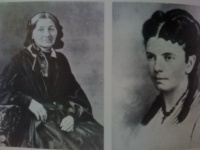From The Peopling of New York City
Contents |
Overview
The German Americans have played a significant role in the educational system in the United States. Two specific impacts they had were the creation of kindergartens and the bilingual programs.
Start of Kindergarten
Two different women are credited as being the first kindergarten teacher in the United States. They are Caroline Louisa Frankenberg and Margarethe Meyer Schurz. Those who believe Frankenberg was the first, says that in 1838 she arrived to the United States and opened the first kindergarten in the nation. However, her first attempt failed, but twenty years later, after she made a return trip to Germany, she succeeded. Her fee for each student was only 75 cents per week, so she sold embroidery and handmade lace to add to her income. Those who believe Schurz was the first, argues that when Frankenberg made her second attempt in 1858, Schurz had already established a kindergarten three years before. However, it doesn’t matter who gets the honor, as the idea of a kindergarten still gradually managed to spread across the United States. [1]
German-English Bilingual Programs
The first large-scale bilingual school system in the United States began over 150 years ago. It is not Spanish, as most Americans tend to believe. Starting in the 1840s, German language programs were prominent when the German population was very pronounced. Over time as the population waned the funding for the schooling diminished with it. The bilingual program set for German-English students was similar to the two-way partial immersion program. German students would be taught in English one half of the day and in German the other half of the day. Because of the need to have the skills of both languages the students kept their German tongue polished and learned their new English tongue and understood its importance. The German-English bilingual programs cleared the way for other bilingual programs to develop in the public schools of the United States. [2]

